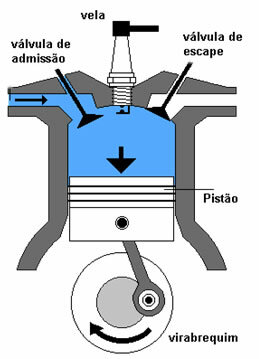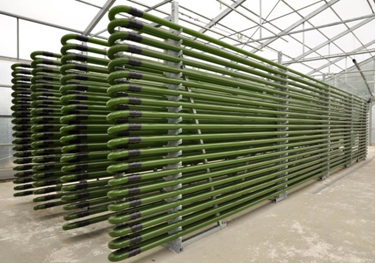Biofuel is any material used to generate energy from organic biomass for use in internal combustion engines.
One of its main advantages is environmental sustainability and the potential to replace fossil fuels in whole or in part.
Examples

Among the raw materials used for the production of biodiesel are: peanuts, babassu, sugar beet, sugarcane, canola, palm oil, sunflower, agricultural residues, corn, soybeans, castor beans, jatropha, oil. palm and wheat.
The raw material that originates the biofuel is mixed in pure form to fossil fuels, such as gasoline and diesel.
Today, the most used forms of biofuels are:
- Biogas
- Bioether
- Bioethanol
- Biodiesel
- Ethanol
- Vegetable oil
Benefits
Biofuels represent an energy alternative to reduce global warming and diversify supply, given the possible depletion of oil reserves.
Among the main advantages of using biofuel are:
- Low CO emission2 In the atmosphere;
- Reduction of global warming and greenhouse effect;
- Brazil has a wide variety of plants that can serve as raw material for the production of biofuels;
Sugarcane is among examples of CO emission reduction2 in the atmosphere, with 90% lower production compared to other energy sources.
Disadvantages
The increase in the price of oil is among the motivations for the expansion of biofuel production.
Although biofuel, by itself, represents low CO emissions2 in the atmosphere, production is based on gases that accelerate the greenhouse effect.
As they depend on cultivation, the products depend on intensive crops and their planting takes place in deforested areas, especially in tropical forests.
Intensive agriculture is also among the biggest consumers of water and elimination of biological diversity. As they represent greater gains for producers, the inputs needed for biofuels encourage a reduction in food crops.
Brazil
Brazil was one of the first countries in the world to produce and use biofuels. The main biofuels produced in the country are biodiesel and ethanol.
In 1975, the Brazilian government incorporated the Proálcool (National Alcohol Program) into the national energy policy.
With this, it boosted the production of ethanol, produced from the fermentation of sugarcane and used in the automotive market mixed with gasoline.
Through the program, Brazil managed to reduce its dependence on the import of oil products in the first phase, in 1979.
As a way to encourage consumption, there was a reduction in taxes for cars powered by alcohol and tax exemptions, especially for taxi drivers.
In addition to industry, agriculture began to receive incentives from the federal government and there was an increase in sugarcane planting.
In order to expand the matrix of biofuels supply, the federal government created, in 2008, Petrobras Biocombustíveis, as a subsidiary of Petrobras.
The matrix managed by Petrobras Biocombustíveis is centered on biodiesel. There is, however, investment in research for gum, glycerin and fatty acid originating from the industrial process.
You may also be interested in: Brazilian energy matrix



